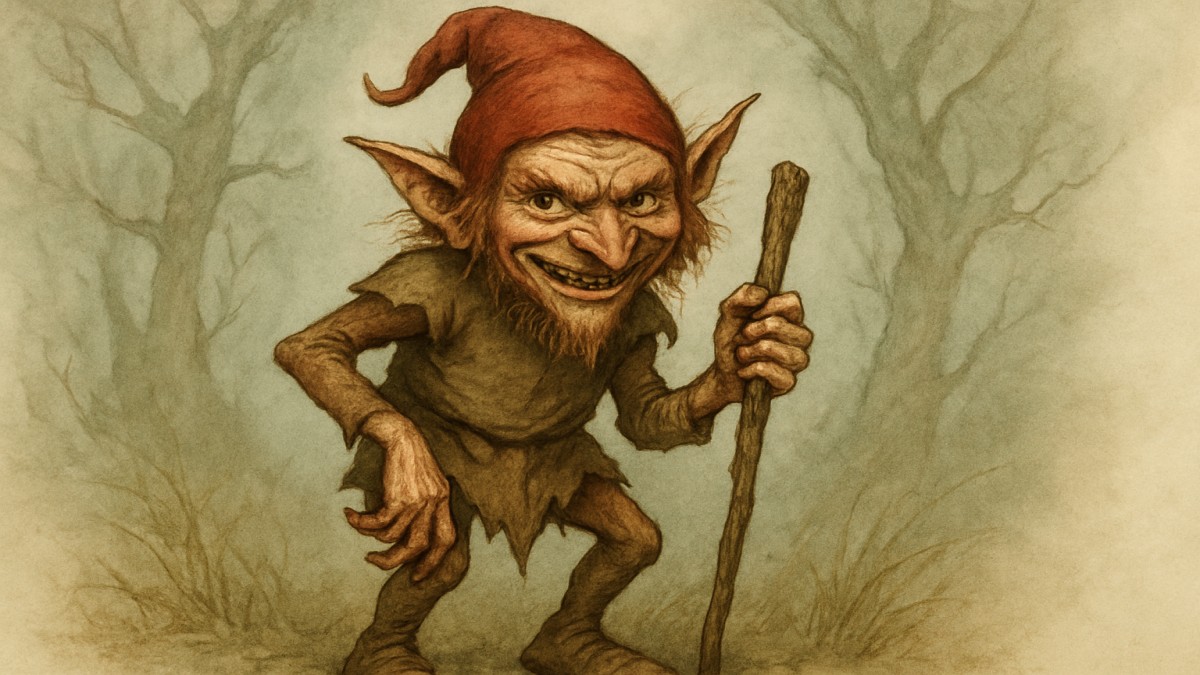Introduction
Impish Creatures of Folklore. What’s small, sneaky, magical, and usually up to no good? If you guessed an imp, you’re already on the right track. Impish creatures have bounced around the corners of folklore for centuries, pulling pranks, stealing food, and whispering nonsense into the ears of the unsuspecting. These mischievous beings are more than just fantasy—they’re cultural symbols of chaos, humor, and even moral lessons.
Let’s dive deep into the chaotic charm of these tiny tricksters.
Understanding the “Imp”
Etymology and Historical Background
The word imp originated from the Old English impa, meaning a young shoot or offspring. It later evolved to mean a small demon or mischievous being in medieval folklore. Imps often appeared in stories as lesser spirits—not necessarily evil, but certainly not angelic.
Traits and Characteristics
Imps are usually described as small, humanoid creatures with exaggerated features—pointy ears, mischievous grins, and sometimes tails or horns. They’re fast, clever, and always up to some sort of mischief.
Not Quite a Demon, Not Quite a Fairy
Imps often live in the ambiguous zone between fairies and demons. Unlike malevolent demons, imps are more about annoyance than destruction. Think of them as the pranksters of the magical world.
Famous Impish Creatures Around the World
European Folklore
- Puck: This English sprite gained literary fame through Shakespeare’s A Midsummer Night’s Dream. Puck is the quintessential imp—chaotic, funny, and full of surprises.
- Kobolds: From German legend, kobolds are house spirits that either help or hinder based on how they’re treated.
- Lutin: These French spirits are small, bearded men who enjoy domestic mischief—hiding shoes, rearranging furniture, or tangling hair.
Asian Folklore
- Kawa-no-kami: Japanese river imps who are known for tricking bathers or stealing cucumbers. Not always harmful, but certainly unsettling.
- Tikbalang: From the Philippines, these impish creatures resemble horses and love confusing travelers by leading them astray.
African & Middle Eastern Folklore
- Jinn: In Arabian tales, jinn (or genies) can be both helpful and mischievous. They’re shapeshifters who might grant wishes—or twist them horribly.
- Tokoloshe: In Zulu mythology, this imp-like creature is said to cause trouble if not appeased.
Common Behaviors and Tricks
Pranks and Harmless Mischief
Imps love hiding socks, making doors creak, or tangling hair while you sleep. They’re the invisible culprits of your missing keys or spilled milk.
Darker Side of the Imp
Sometimes, imps step over the line—causing illness, misfortune, or even death, especially when summoned by dark magic or mistreated by humans.
Symbolism and Cultural Meaning
Imps often represent untamed energy, chaos, and rebellion against the status quo. They’re metaphors for childhood mischief or the little voice that tells us to do something we know we shouldn’t.
Imps in Literature and Popular Culture
From Shakespeare to Fantasy Novels
- Puck: Possibly the most famous imp of all time, Puck taught us that a little chaos makes life more interesting.
- Terry Pratchett’s Discworld: Features imps in cameras and magical devices, playing on the idea that mischievous spirits power our tech.
Film and TV
- Gremlins: While not called imps, these chaotic creatures echo the impish archetype—cute at first, but total chaos unleashed.
- Dobby the House Elf: While not an imp by name, Dobby’s love for mischief and his tiny, magical form fit the mold perfectly.
Magical Abilities and Powers
- Teleportation: Imps are said to appear and disappear in the blink of an eye.
- Shapeshifting: Some legends say imps can take on animal forms or even become invisible.
- Illusions: Impish creatures often deceive the senses, leading travelers astray or making them see things that aren’t there.
Protection and Warding Off Imps
Many cultures have rituals to protect against impish behavior:
- Salt and Iron: Common folklore suggests sprinkling salt or keeping iron charms near doors.
- Symbols and Charms: From pentacles to horseshoes, humans have long relied on talismans to deter mischievous spirits.
Conclusion
Impish creatures aren’t just ancient relics of storytelling—they’re reflections of our own playful, rebellious, and unpredictable sides. Whether they make us laugh, scare us, or confuse us, one thing’s for sure: the world would be a lot duller without them.
FAQs
1. Are imps always evil?
Nope! Most imps are more annoying than evil. They love tricks but rarely mean serious harm.
2. Can imps be summoned?
In some magical traditions, yes—but it’s usually discouraged due to their unpredictable nature.
3. What’s the difference between an imp and a goblin?
Imps are usually magical tricksters, while goblins are often more brutish and greedy.
4. Do imps appear in modern video games?
Yes! Many RPGs and fantasy games feature imps as low-level magical creatures.
5. Are imps part of any religion or spiritual practice?
They appear in occult and pagan traditions, often associated with chaos or elemental magic.

 Blog2 months ago
Blog2 months ago
 education2 months ago
education2 months ago
 Blog2 weeks ago
Blog2 weeks ago
 News2 months ago
News2 months ago



















